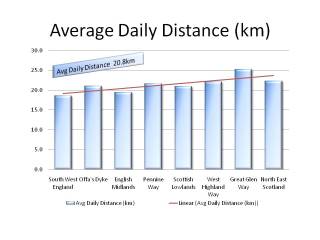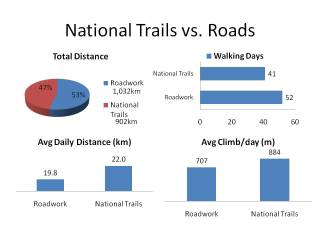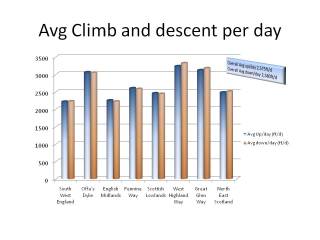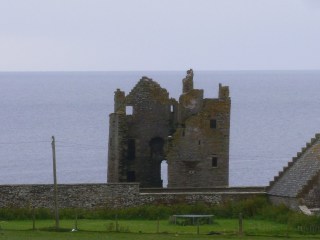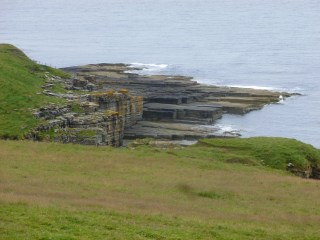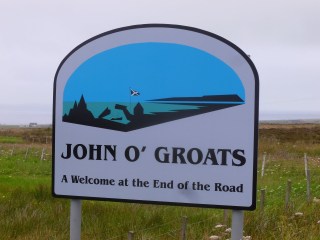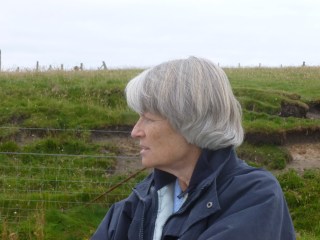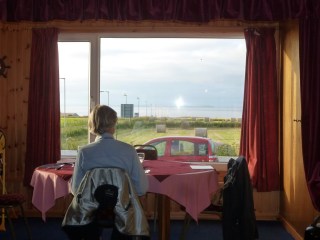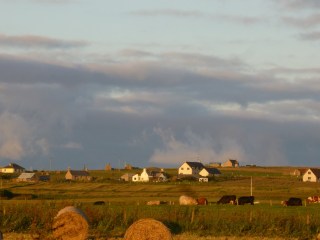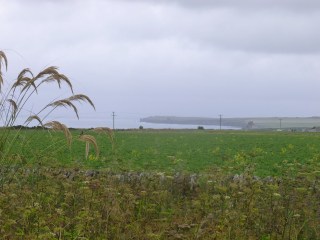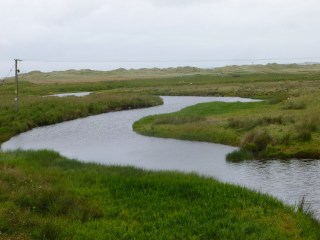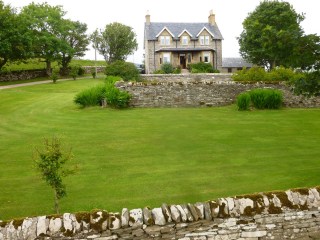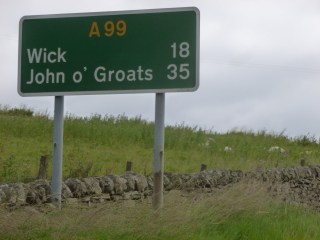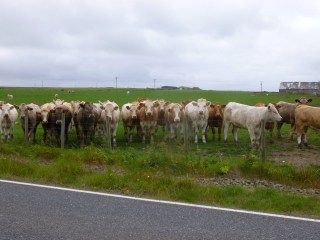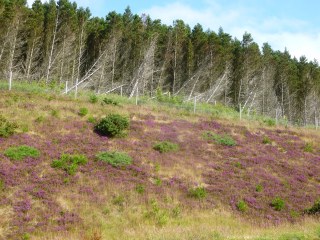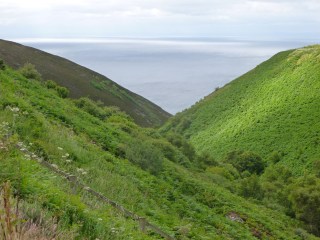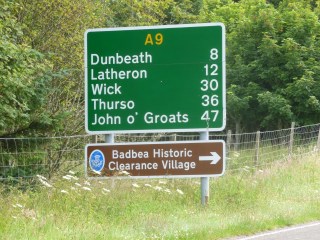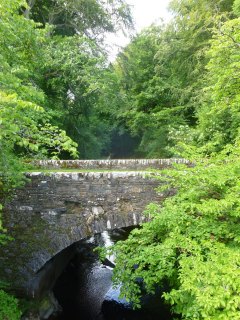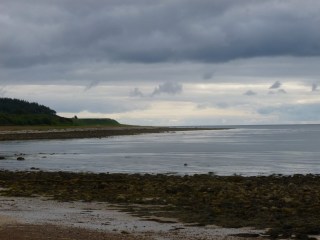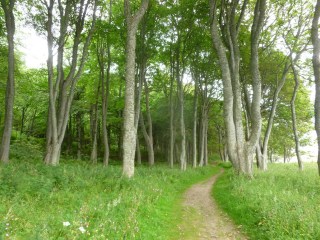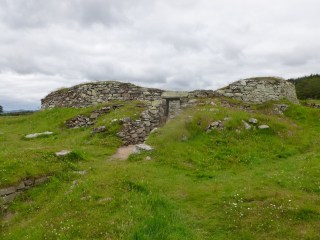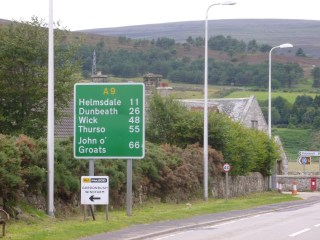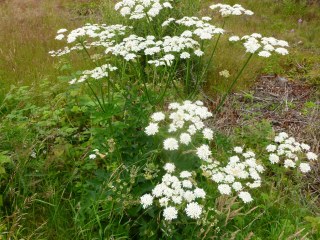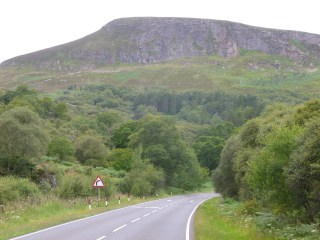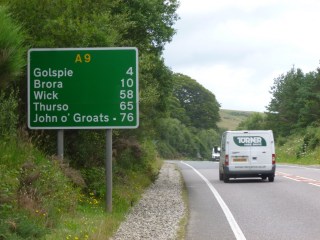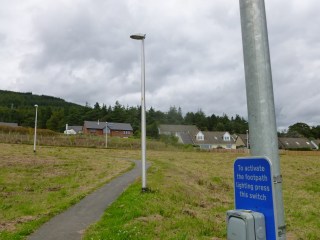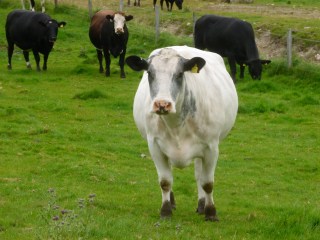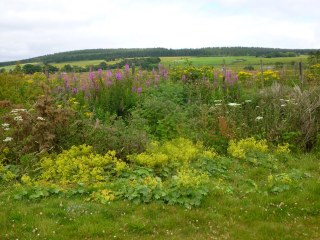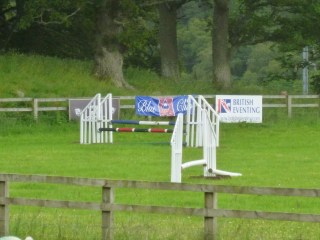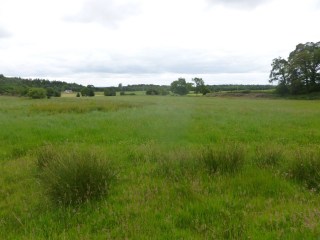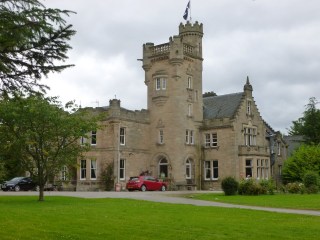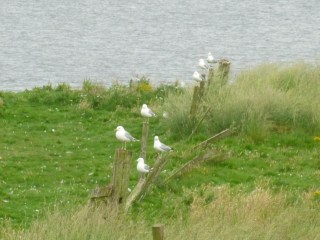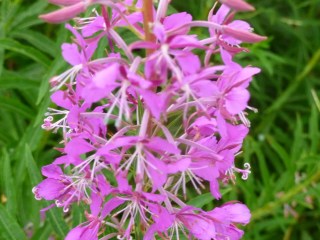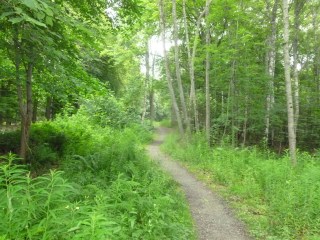| Weather: Partly sunny with howling northerly, spitting sleet |
| Distance covered today: 25.2km (15.7mi) |
| Last night’s B&B: Customs House (£20) |
| Cumulative distance: 1873.9km (1164.4mi)/ % Complete: 96.7% |
| GPS satellite track of today’s route: Day 90 (click!) |
As my journey’s end approaches, I thought it might be appropriate to draw all the strands together and I want to be as practical and unemotional as possible. I also want to try and make sense of the whole thing. I probably do need more time to reflect on it all; to gain some perspective, but on the other hand, it may be as well to get it off my chest while I am still walking and while it is all still fresh in my mind. I have decided to split my comments into three posts; the first will deal with the accommodation I have enjoyed, the second will deal specifically with practical matters for walking long distance, and the third will touch on the more personal side of things. The last day of my journey will undoubtedly be a busy time, not least because I will be meeting Veronica at John O’Groats. I doubt I will have much time for blogging, so it is my intention on that day to publish just a short post. I will anyway be done with all the introspection by then! She wouldn’t have it any other way!
So let me start with accommodation. You will appreciate that on any long distance walk, the walker is unlikely to spend more than about six or seven hours of any given day, actually walking. To do more would require extraordinary levels of fitness. Even allowing for a couple of hours in the pub, most of the rest of the time will be spent in a B&B or alternative accommodation. Accommodation also comprises the most expensive part of the experience. It follows that selection of the right accommodation is really very important in terms of the enjoyment of the whole thing.
In my case, I used B&Bs exclusively, which meant that I didn’t use YHA Youth Hostels. I did look at a few of them and they are an option, especially for those on a tight budget. I found that age really isn’t a barrier, and, at a cost, one can even reserve private rooms. But at best they offer little in the way of comfort, and they weren’t right for me, so I really can’t comment.
My experience shows that B&Bs come in a number of guises, roughly as follows:
· The Home from Home: The accommodation is completely removed from the owner’s accommodation, which is marked “private” and can even be locked. The guests reside in an hermetically sealed part of the establishment, and apart from greeting, the only contact is over breakfast.
· The Guesthouse: This consists of many rooms often on multiple floors, often in a converted traditional townhouse. The rooms tend to be Spartan, the residents professional working people and the overworked owners are seen only in passing.
· The Retirement Project: An elderly couple, whose kids have flown the nest, and who need a little money to help with expenses. They are extremely attentive and old-fashioned, and not everything works. There are lots of pictures of grand-children and even great-grand-children, and many proud pictures of degree ceremonies! In many cases, only a single old lady remains.
· The Family: These people, remarkably, invite the guests into their home. Their hospitality can even extend to sharing evening meals with their guests. This is by far the most intimate form of accommodation and asks the most of the providers. It is also the most interesting and enjoyable, though it has its own stresses, even for the guest, who is inevitably on best behaviour!
· The Hotel: For reasons of economy, I excluded the luxury end of the market. Most of the relevant hotels only offer B&B, and they are cheap and cheerful, but the advantage is that they always have a pub, serve evening meals and their very impersonal nature can be relaxing. On the other hand the service and food quality can be poor!
There are of course many variations on these themes, sometimes combining them. I found that I enjoyed all of these categories, and contrary to my expectations, found good and bad examples among all of them. It really isn’t possible to generalise in terms of quality, and all I would say is that a lot depends on how much intimacy one wants with the providers. Inevitably the hotels and guesthouses are the most anonymous, whereas the “family” is the most intimate and therefore interesting.
At first, I thought en-suite was a luxury I couldn’t afford, but I now find that so many B&Bs have en-suite facilities that it is worth checking. Often, it costs a little more, though certainly not always. The industry has developed very neat, tiny showers and loos that can be retrofitted to rooms where there is just a little space available. TV is very widely available, and is especially useful for morning weather forecasts. Often, digital TV has been retrofitted to a conventional TV via a set-top box, and getting the thing to work can be tiresome! The full English/Scottish breakfast is universal and sadly, there is often no alternative healthy option. I was surprised to find a phenomenally high standard of cleanliness across the board, which I found quite amazing! Not a single B&B let itself down in this respect.
I needed to have my clothes washed as I went along. In those towns where there wasn’t a laundrette (most of them: everyone has washing machines and driers these days!), I had to fall back on the long suffering B&B owner to do my washing for me. Not a single one refused. Sometimes I had to pay, mostly I didn’t and although I knew they didn’t really enjoy doing it, they hardly ever showed any resentment. They understood my need.
I decided to rate all the B&Bs as I went along. I used the following criteria: Attitude, Facilities, Attractiveness, Breakfast and Wifi Availability. Attitude counted twice as much, and wifi half as much as the other criteria. As cleanliness was universally so high, I haven’t used it as a criterion. I have chosen to publish only the top twelve and the bottom five. The places at the top end are so good that I would recommend deviating from a planned route to spend some time there, and the bottom five are so bad that I would avoid them at all costs! These ratings did not take account of the cost; I have included the B&B rate I was charged for information, but these rates will depend on the sort of room booked (single, double, etc.) and the time of year. It is interesting though that cost was not a huge factor in my assessment of quality. My final comment would be that of course these assessments are hugely subjective, and will have depended on how I was feeling, my experience over the previous few evenings, how deep I was into my journey and of course my hosts too may have been having a good or bad day. Of course, I haven’t experienced the final B&Bs in my journey yet, so they are obviously not included. If their rating affects the tables, I will amend the tables retroactively.
Best B&Bs
|
Little Pengelly Farm
|
Trenwheal
|
96%
|
£ 40.00
|
|
Corrie Duff
|
Fort William
|
94%
|
£ 32.00
|
|
Nichols Nymet House
|
North Tawton
|
92%
|
£ 57.00
|
|
Sedgeford House
|
Whitchurch
|
92%
|
£ 40.00
|
|
Pack Horse Inn
|
New Mills
|
88%
|
£ 67.50
|
|
Beck Hall
|
Malham
|
86%
|
£ 50.00
|
|
Hallcroft
|
Dufton
|
86%
|
£ 36.00
|
|
Kirkfield
|
Invermoriston
|
86%
|
£ 45.00
|
|
Bashfords Farmhouse
|
West Bagborough
|
84%
|
£ 37.50
|
|
Mulsford Cottage
|
Malpas
|
84%
|
£ 45.00
|
|
Allerton House
|
Jedburgh
|
84%
|
£ 55.00
|
|
Dunbius guesthouse
|
Tain
|
84%
|
£ 40.00
|
Worst B&Bs
|
The Lamb Inn
|
Congleton
|
38%
|
£ 30.00
|
|
Rosemoor
|
St Austell
|
36%
|
£ 40.00
|
|
Rose Cottage
|
Inverarnan
|
36%
|
£ 40.00
|
|
Cross Farm
|
Mankinholes
|
32%
|
£ 30.00
|
|
Golden Lion Hotel
|
Horton-in-Ribblesdale
|
30%
|
£ 40.00
|
Unsurprisingly, the better B&Bs tended not to be on the National Trails, with a few honourable exceptions (Corrie Duff, Beck Hall, Hallcroft and Kirkfield), whereas three of the five worst were on the National Trails. This is probably because B&Bs on the National Trails tend to have a captive clientele and they don’t have to try so hard. It sometimes felt as if I was being “processed”!
I thought quite hard about whether I would actually publish these lists on the open internet. I decided that the winners wouldn’t mind and I am completely convinced that the losers have so little interest in me, any other customers, the internet or for that matter, their own B&Bs that they are most unlikely ever to see this. More’s the pity…..
Please forgive me, but I can’t resist one final anecdote, now that I am on the subject of accommodation! It’s another story from East Russia and just one of a kaleidoscope of memorable experiences. I can’t for the life of me remember the town where it happened, but I do remember that I was staying in an hotel that used to house visiting party big-shots in Soviet times. There were far more security staff wandering all over the place than there were hotel staff, and I felt a little insecure wondering what they were guarding against.
I was watching BBC World News on TV as I went to bed. I had to get out of bed to switch the room lights off, and fell asleep while watching the news. A couple of hours later, I woke to hear some strange human sounds and found that the room lights were on! To my amazement there was a very explicit porn film on TV and the room was ablaze with light! Thoroughly discombobulated, I switched off the TV and the lights and went back to sleep. A little while later, the same thing happened! I began to get anxious that I was being set up for some sort of sting operation! My cunning strategy was to leave the TV on and change the channel. The only other English speaking channel I could find was a South African sports channel, M-Net SuperSport! I thought I was hallucinating! What had happened to me that I was suddenly alternating between porn and South African sport! It seemed somehow appropriate that I was in Eastern Siberia!
Next morning, I turned up for breakfast at 07:00 as advertised on the restaurant door, only to find that the many security staff were making sure that I wasn’t allowed ingress. Later I found out that all the signs were there for the benefit of staff, not customers. 7:00 am was when the workers arrived. Customers would just have to wait until the staff was ready. I wanted to ask about the fiasco in my room, but somehow, what with the language barrier, words failed me!
I never did find out what the TV thing was all about, though I suspect it had something to do with the tastes of visiting party members before Perestroika. I am happy to report that I found nothing of those attitudes in any of my B&Bs on this trip. Not even the option of a porn movie!! (Not, of course, Veronica, that I was looking for it!!!)
Counting down from Helmsdale
First I had to shin it up this headland……
past this pewter sea
Suddenly, the Highlands were again alive with colour….
With the sea always visible to my right
I have decided that the flower of my journey is the humble buttercup. It has accompanied me with its bright, buttery yellow, all the way from Land’s End, colouring field after field, never missing a day!
Still counting down, though I detoured to Badbea….
Badbea was one of the “Clearance Villages”, where the Highlanders were settled next to the coast to make their way in the new industries of fishing and weaving. The siting of this village was dangerous and inappropriate and it didn’t survive. The memorial commemorates various people who were born there, some of whom emigrated to places like New Zealand
Still lots of colour in the Highlands. Why is it that so many Highland flowers are purple? And why is it that colours in nature never seem to clash? Is it just that we have learned our colour sense from nature and the harmony is hard-wired into our brains?
The bridge across the river at Berriedale. It involved a mile-long descent to sea-level, followed by a mile-long climb out the other side. The cyclists felt it more than me
At last, some decent waves on the coast!
Looking down at Berriedale from above
Looking up the coast towards Dunbeath
The Highland colours are rich and beautiful
This is Rosemary, who I met over breakfast at the Beltane Festival in
Peebles! I was trudging along today, lost in thought, when suddenly this car screeched to a halt, did a rapid turn and there she was! Apparently, she was returning from a brief visit to Orkney and had just been talking to her friend in the car about this nutter who was doing LEJOG, and suddenly there I was! I can’t believe she recognised me! What a strange coincidence!! We had a joyous reunion and went on our way!
Ant’s eye view of traffic on the A9. I was sitting down for a rest
Still counting down in Dunbeath!
That is Dunbeath Castle up on the hill overlooking the North Sea




